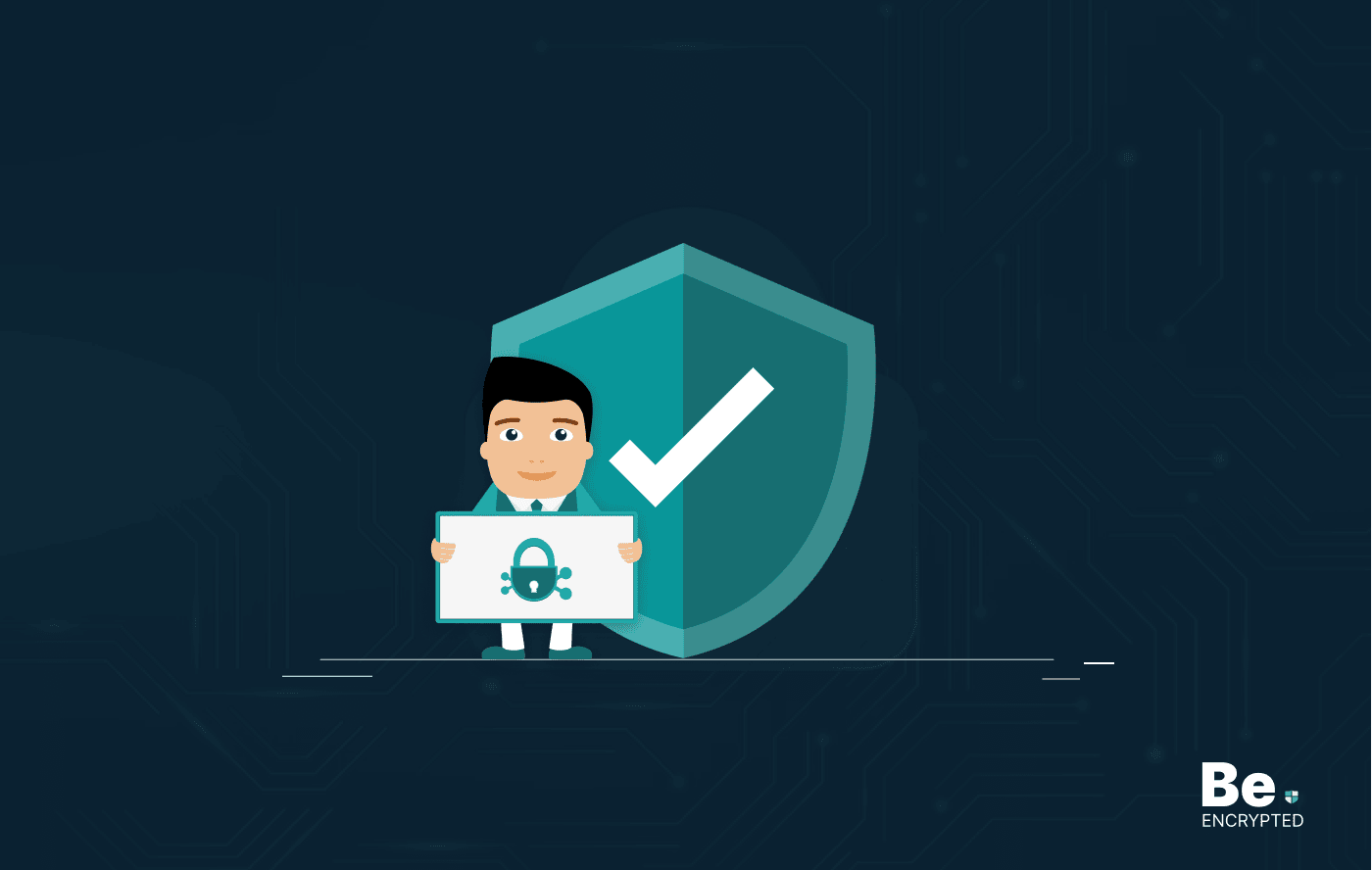Amidst the rising number of data breaches, it is crucial to protect data in the most secure way possible. With MFA getting relatively weak, passwordless authentication seems to be the perfect solution to attaining robust password security. The use of modern technology makes it secure and hassle-free, allowing every individual ease in adopting it.
Passwords have quickly become one of an organization’s most significant vulnerabilities. A 2020 Verizon data breach investigation revealed that 81% of the data breaches labeled lost or stolen passwords as the cause. Therefore, it has become ever more crucial to enable robust password security. However, the ultimate method for attaining such robust security is still somewhat unknown.
Previously, multi-factor authentication was the ultimate method of ensuring robust password security. However, over the years, the term has become somewhat of a buzzword used by cybersecurity professionals, particularly as this method has started failing. The sophistication within the cyber threat landscape now demands a much more effective form of enabling data privacy and security.
Issues with the multi-factor authentication method
Admittedly, the multi-factor authentication method has served the cybersecurity industry well. Since its advent, the form has proven to help enable data privacy and security. However, over the past years, MFA has lost its original security.
Although the concept seems foolproof on paper, the main problem with multi-factor authentication lies in its operation. It works by adding additional layers of security to an already password-protected endpoint. However, the use of passwords makes MFA vulnerable to its core.
Several methods are available for threat actors to compromise these passwords and gain access to endpoints in simple ways. Moreover, the authentication methods that MFA relies on, such as OTPs or SMS verification, or PINs, are somewhat old school and vulnerable to getting compromised in various ways, such as:
- PINs are passwords and have a high chance of getting stolen
- SMS verification, or OTP, has several security issues that even NIST advises against using.
The ultimate commercialization of cybercrime has led this authentication method to its slow death. This has made organizations, enterprises, and individuals vulnerable to data theft and other security breaches. The dark web is swarming with various phishing kits to crack even the robust authentication technique. The researcher at Proofpoint said these phishing kits could circumvent multi-factor authentication by stealing cookies.
Passwordless authentication vs. MFA – Key differences
As its name implies, passwordless authentication revolves around a method that doesn’t rely on a password. Simply put, passwordless authentication is more of a choice or ultimate goal than multi-factor authentication or single sign-on, which has become a product.
The main objective of going passwordless is to reduce and potentially eliminate passwords and revolutionize endpoint access management. The authentication is similar to multi-factor authentication, except it stops using passwords altogether. This modern authentication method relies on the use of identity verification methods that don’t rely on passwords, such as:
1. Adaptive authentication methods
The method relies on analyzing a pattern in the user’s behavior. No deviation from the norm goes unnoticed, and the risks associated with each login are evaluated using the user’s personal information, such as location, registered device, etc.
2. Decentralized credential store
One crucial aspect of every passwordless authentication method that makes it ultimately secure is that they don’t store users’ data within a system. Instead, the information is stored within a user’s device, making it inherently more secure than traditional password-based security approaches.
3. Liveness detection
Passwordless authentication methods mainly rely on the liveliness detection technique, which uses various algorithms to analyze data collected by biometric scanners for verification. The method can help identify a fake login attempt by differentiating from a live person preset at the real-time capture point or a fake object, a lifeless body part, or even a prosthetic device.
4. Asymmetric cryptography
Methods of authentication in passwordless authentication necessarily rely on the same principle as digital certificates. These methods deploy asymmetric cryptography with a private key to unlock. The secure nature of asymmetric cryptography ensures that only authorized people, servers, devices, or machines can access the private key.
Is going passwordless the ultimate solution?
Although passwords have been around for a considerable time, it is no known fact that they have become more of a liability than security. Therefore, it has become exceedingly crucial for organizations and enterprises alike to go passwordless due to its numerous benefits, such as:
1. Protection against phishing attacks
Phishing is one of the most prevalent types of cyberattacks and is the reason behind 36% of data breach attacks. Most phishing attacks involve the threat actor duping victims into revealing their login credentials. However, integrating passwordless authentication can help mitigate such risks.
Since passwordless automation relies on modern authentication methods instead of passwords, the possibility of compromised credentials is zero. Therefore, it leaves no room for users to fall victim to phishing attacks.
2. Improves supply chain security
Passwordless authentication secures the supply chain from software supply chain attacks. Since it relies on secure authentication methods for phishing-proof access, it also prevents threat actors from entering the database and comprising the network by injecting malicious code.
3. A stronger cybersecurity posture
Compromised credentials mean a threat actor can access sensitive information about your business, clients, customers, accounts, and finances. With such control, these threat actors can steal your money, exploit customers’ and clients’ data for identity theft, or even sell sensitive information over the dark web. Therefore, it is best to have passwordless authentication to eliminate such risks.
Possible drawbacks of passwordless authentication
Like other security measures, passwordless authentication is not a foolproof solution. While it does provide robust privacy and security, it does have some of its drawbacks. It stores information within the user’s device instead of a system. Amidst this, cases of lost or intercepted devices can potentially become the gateway to data theft.
Besides that, since the technology is relatively new, many professionals hesitate to trust it. The mistrust probably arises because the idea completely negates the use of passwords, which have long since been the oldest method of ensuring security.
While these drawbacks are somewhat concerning, they can be mitigated quickly. Therefore, passwordless authentication seems like the ultimate solution, unlike other password security methods, such as MFA.
Share this article
About the Author
Shigraf is an experienced cybersecurity journalist and is zealous about spreading knowledge regarding cyber and internet security. She has extensive knowledge in writing insightful topics regarding online privacy, DevOps, AI, cybersecurity, cloud security, and a lot more. Her work relies on vast and in-depth research.
More from Shigraf AjazRelated Posts

19 Best Vulnerability Management Software or Tools in 2024
KEY TAKEAWAYS Vulnerability management tools scan and detect weaknesses within the network that hac...

How to Detect, Identify and Fix Packet Loss with Best Tools
KEY TAKEAWAYS Packet loss reduces the speed and amount of data that flows through the network. This ...

15 Best Network Security Software – Top Pick Of Organizations
KEY TAKEAWAYS Network security software keeps the data secure and blocks malicious or potentially vu...

15 Best Virtual Machine Software for Windows in 2024
KEY TAKEAWAYS Virtual machine software is a vital tool for developers to deploy VM software to test ...

What is Software Deployment: Risks and Best Practices
KEY TAKEAWAYS Software deployment is facing various security risks amidst the advancements in the in...

Building Encryption into the Network Fabric with SASE
A network fabric is a mesh of connections between network devices such as access points, switches, a...


